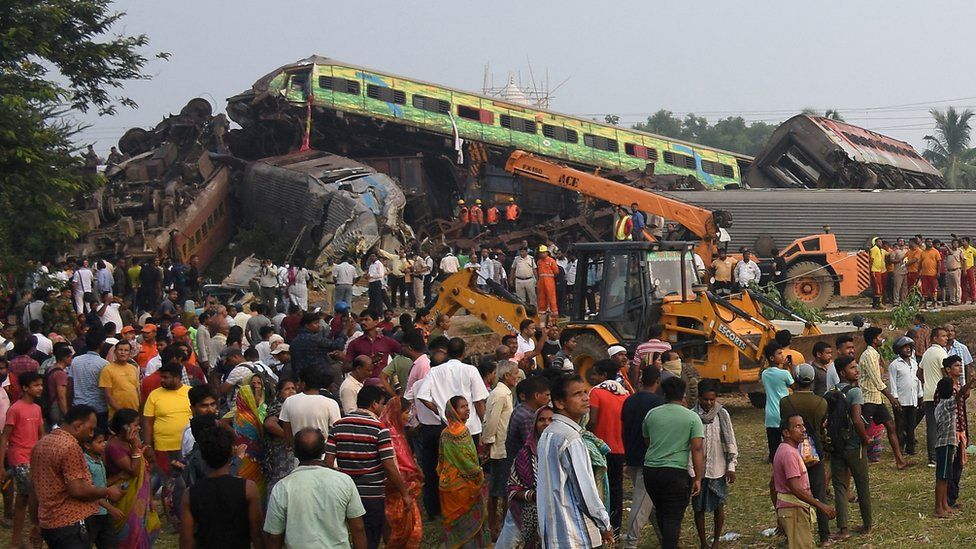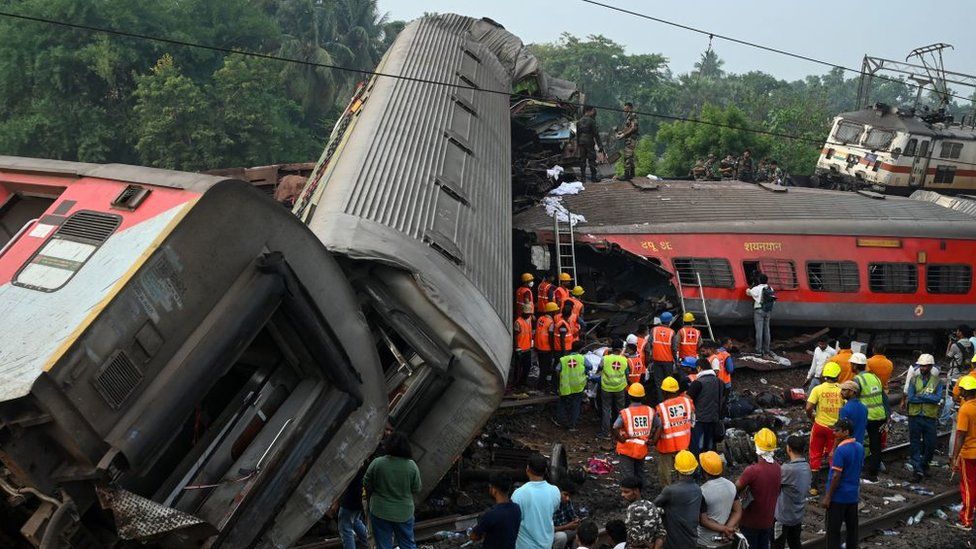Deadly Train Accident in Odisha Leaves Over 200 Dead and Hundreds Injured
A Tragic Derailment
Over 200 people lost their lives after a horrific train accident in Balasore, Odisha. It all began when one passenger train derailed from its tracks for unknown reasons. With trains using the same route, accidents during derailments are difficult to avoid.

Collision with Oncoming Trains
Unfortunately, as the derailed train lay immobilized on the tracks, not one but two more trains were unable to stop in time. First, another passenger train collided head-on with the derailed carriages. The impact was tremendous and caused even more damage. Within minutes, a goods train followed and smashed into the tangled mess of mangled wagons. Over 900 passengers sustained injuries in the triple collision that ensued.
Rush to the Hospitals
The scale of casualties was immense. With so many lives at stake, speed was of utmost importance to save as many injured as possible. Within half an hour, over 20 ambulances had arrived at the scene of the accident. Injured passengers were ferried to the nearby Balasore District Hospital with critical injuries. The hospital staff scrambled into emergency mode, doing their best to tend to severe wounds. Many patients had lost a lot of blood and needed urgent transfusions.
Call for Blood Donations
With hundreds of injured flooding in, the hospital’s blood banks could not meet the immediate demand for blood. News of the requirement for blood donations spread like wildfire across Odisha. People learned of the tragedy and rushed to the hospitals, ready to donate blood through the night. Long queues of donors formed despite it being midnight. This selfless act showed the caring spirit of Odisha’s people who always strive to help in times of distress.
Coordinating the Relief Efforts
The magnitude of the accident was unprecedented for Balasore. All hospital resources and personnel were mobilized for triage and multiple casualty management. Additional medical teams were called in from other districts to assist with the overflow. Coordinating space, equipment and manpower across different facilities was a mammoth task. The Chief District Medical Officer ensured streamlined workflow and communication between hospitals handling the casualties.
Expressing Grief and Support
The accident shocked the entire state of Odisha. People kept track of updates and waited anxiously for the toll to stop rising. Chief Minister Naveen Patnaik expressed profound grief for the lives lost. He announced financial aid and vowed a high-level investigation into the accident. Several other political leaders visited the injured in hospitals to offer support. The outpouring of sympathy comforted the grieving families during their time of immense suffering.
Long Road to Recovery for the Injured
Even a week after the accident, dozens remained under critical care at various hospitals. Many needed complex surgeries and prolonged therapy. The road to recovery would be long and arduous for these patients. Besides physical trauma, the emotional toll of witnessing the accident was also immense. Continuous counseling support was provided to help victims cope with the trauma. Well-wishers kept pouring in donations to help cover the rising medical costs. Slowly but surely, people recuperated with the diligent efforts of medical staff and caring locals.
Promising Safety Reforms to Prevent Recurrence
The Railways department faced severe criticism for negligence regarding track maintenance and signaling infrastructure. An investigation was launched into the lapses that led to the accident. Key safety measures like automatic braking systems and rail improvements were identified as important corrective actions. The Railway Minister promised major safety reforms and revamp of the outdated sections. Only with systemic upgrades and preventive monitoring can railway accident casualties be reduced in the future. The people of Odisha hope no other family has to endure such a tragic loss again.
Display of Human Compassion
Even in the face of tremendous adversity and loss of life, the people of Odisha rose to the occasion with amazing compassion. Within hours of the accident, hundreds lined up to donate blood without hesitation. Assistance continued to pour in from across the state to aid victims’ recovery. The timely community support was instrumental in saving many lives otherwise doomed without transfusions. It reaffirmed people’s faith in humanity during India’s worst train accidents that killed over 200 souls. Odisha sets an example of human kindness for the whole country to emulate.
